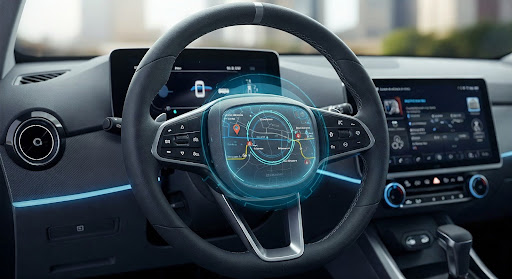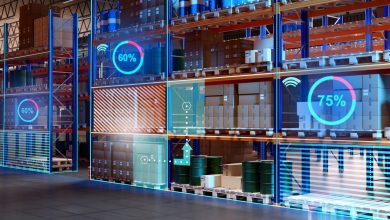
Can an AI dashboard transform autonomous systems? In 2024, autonomous vehicle crashes, though rare, cost the industry $2.3 billion in damages and delays, per a McKinsey report. The stakes are higher than ever: with 1.3 million global road deaths annually, per the World Health Organization, autonomous systems promise safer roads but require precise execution. Companies race to perfect these technologies, yet complexity sensors, AI models, and live data overwhelm traditional testing. A single oversight can erode trust, halt deployments, or worse, risk lives.
Autonomous systems integrate cameras, LiDAR, radar, and machine learning, processing terabytes of data per hour. Testing significant errors across countless scenarios, rain, night, crowded streets, before vehicles hit the road. A 2023 Deloitte study found 55% of autonomous tech firms struggle with inefficient testing, delaying launches by months. The industry craves tools that don’t just test but anticipate, ensuring safety and speed. For developers, regulators, and drivers, the gap between innovation and reliability is a high-stakes tightrope.
Picture a commuter relying on a self-driving shuttle or a fleet manager overseeing 100 autonomous trucks. Safety isn’t abstract; it’s a family reaching home, a business avoiding millions in losses. The solution is precision: systems that deliver clarity, catching flaws before they cascade. One engineer saw this need and built a tool to bridge it, redefining how autonomous systems earn their place on our roads.
Spriha Deshpande, a quality assurance leader at a renowned tech firm, has spent years ensuring complex systems don’t falter. From her base in Silicon Valley, she blends automation, AI, and relentless rigor to safeguard innovation. Her breakthrough? An AI-powered automated dashboard that tracks key performance indicators (KPIs) and test results live. “It’s not just about catching bugs,” Spriha says. “It’s about making sure every decision is safe, every time.” For engineers and executives, her work is a lifeline in a high-pressure race.
Traditional dashboards relied on manual updates, lagging hours behind live feeds. Autonomous vehicle testing generates millions of data points, sensor accuracy, latency, and failure rates, requiring instant analysis. Without it, developers miss critical flaws, and executives lack insights to greenlight deployments.
The dashboard uses machine learning to analyze test results, detect patterns, and flag issues, down to root causes and severity, in seconds. Integrated with JIRA and SQL databases, it pulls live data from testing cycles, visualizing KPIs like error rates and system uptime. Spriha’s test frameworks, coded in Python and utilizing TensorFlow, ensure scalability across platforms. “It’s like a mission control for testing,” she says. Rigorous stress tests, run on emulators and real devices, validated its reliability under peak loads.
Integrating diverse data streams, LiDAR feeds, camera logs, and simulation outputs required meticulous preprocessing to avoid noise. “Messy data kills insights,” Spriha says. She used ETL pipelines to clean inputs, ensuring accuracy. Scaling for thousands of simultaneous tests demanded low-latency cloud clusters; she optimized for AWS, cutting response times to under a second. Ensuring fairness was critical, as biased metrics could skew safety assessments. Spriha applied adversarial debiasing to balance datasets, earning praise at a 2024 AI conference. Leading cross-functional teams, she iterated via Agile sprints, refining the dashboard based on developer feedback.
The dashboard slashed reporting time by 40%, per internal metrics, letting teams resolve issues before they escalated. Defect rates dropped 30%, boosting system reliability. Stakeholders gained live visibility, speeding decisions by 25% and cutting launch delays. One pilot project, for a fleet of autonomous shuttles, hit the market three months early, saving $1.2 million. The framework’s scalability drew interest from robotics firms, with one adopting it for drone testing. Presented at ICIRAIML 2025, it was hailed as “a new benchmark for QA”.
With autonomous vehicle investments hitting $200 billion by 2026, per IDC, reliable testing is non-negotiable. Spriha’s framework could guide medical robots, warehouse drones, or smart city grids anywhere AI meets live demands. Her firm’s RPA tools already streamline operations; this extends that precision to safety.
She mentors juniors, judges STEM fairs, and keynotes conferences. “You see the driver’s trust,” she says of field tests. “That’s why you build.” The metrics are 40% faster and have 30% fewer defects.
As the autonomous systems industry surges toward a projected $200 billion investment by 2026, the demand for reliable, scalable testing solutions has never been more critical. Live analytics and AI-driven validation are no longer optional; they are the backbone of safe, market-ready technologies that promise to redefine mobility. From self-driving shuttles to warehouse drones and smart city grids, the ability to anticipate and eliminate flaws in complex, data-intensive systems determines whether innovation delivers on its potential. Tools like the AI-powered dashboard, which can slash testing times, reduce defects, and accelerate deployments, are setting new standards for precision and trust. By bridging the gap between raw data and actionable insights, such advancements ensure that autonomous technologies not only meet regulatory and safety demands but also pave the way for a future where reliability drives progress across industries.


